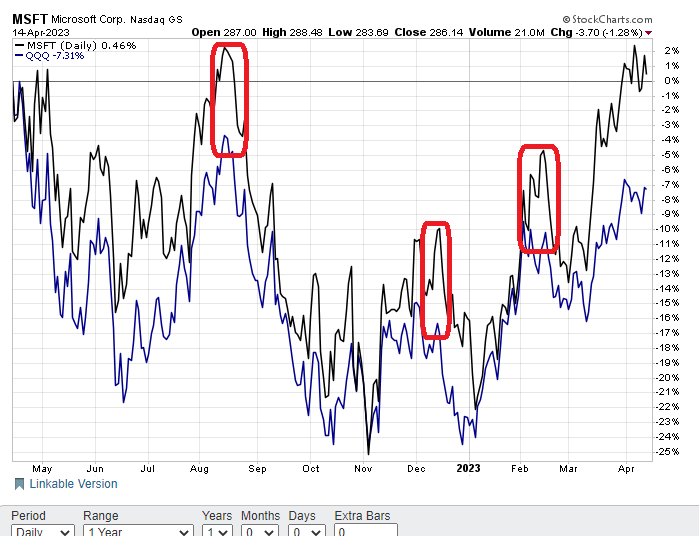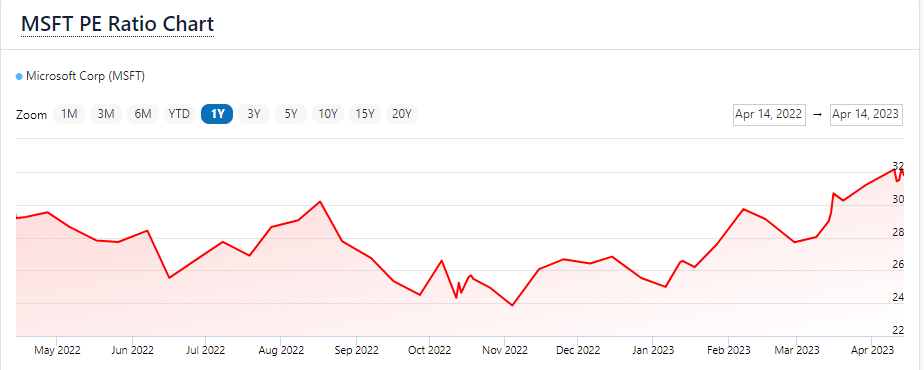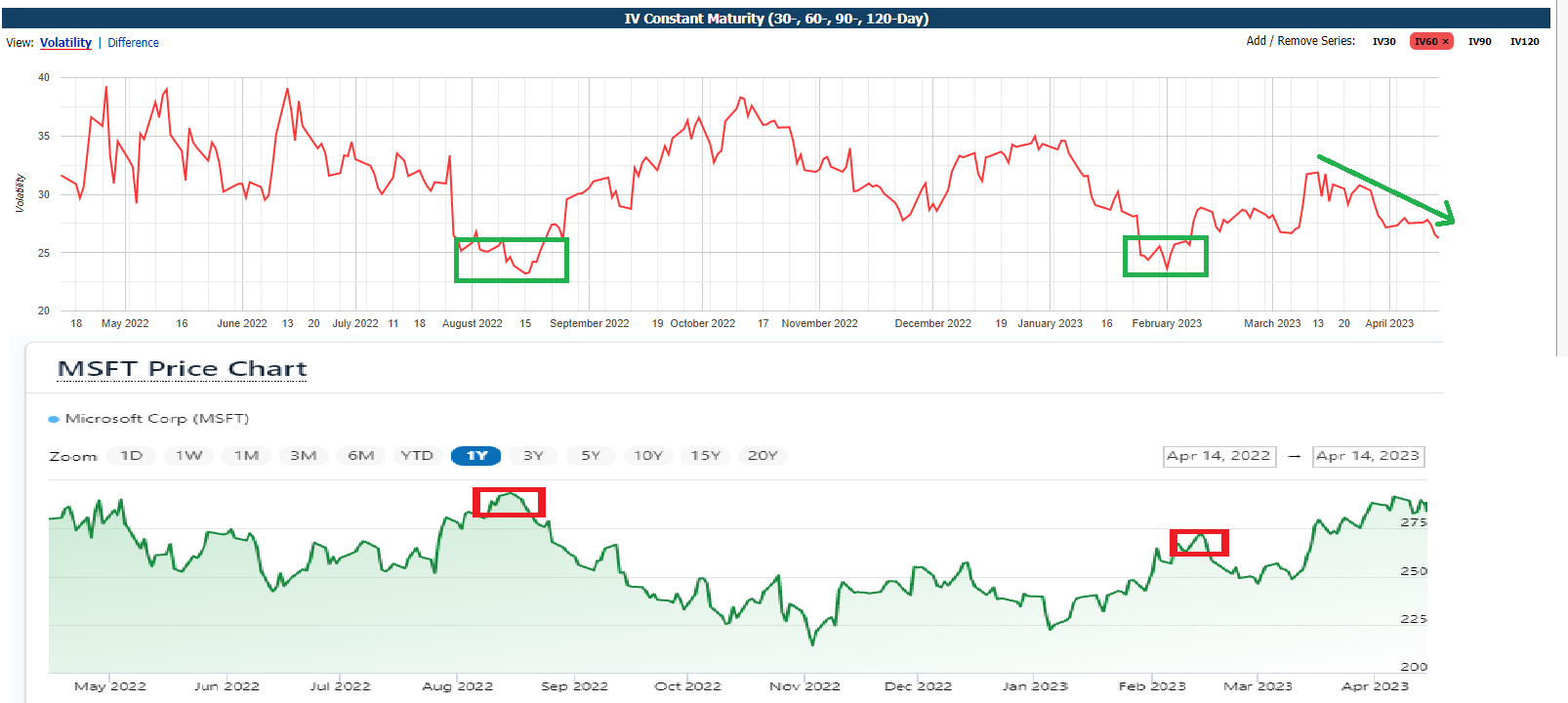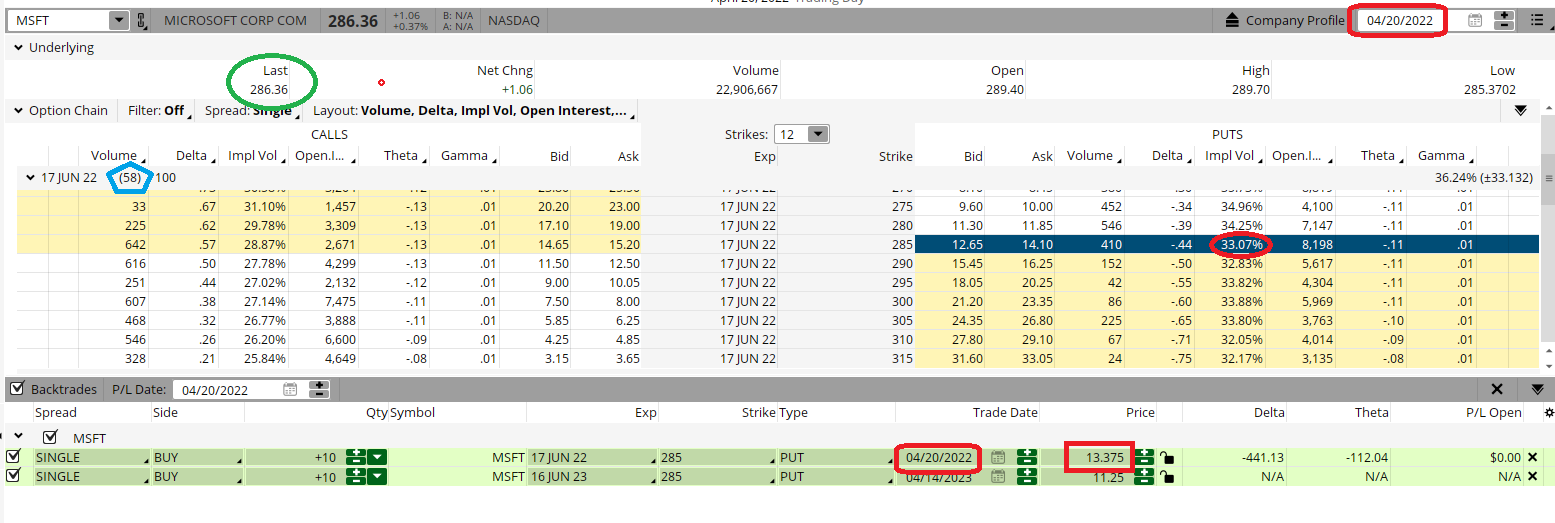Three Big Reasons Why Microsoft May Be Poised For A Pounding

A better way to play for a probabilistic pullback in MSFT with cheap puts.
Microsoft (MSFT) is one of two U.S companies sporting a market cap over $2 trillion. MSFT stock has rallied over 30% in the past few months after making a recent low near $220 on January 6.
The recent red-hot rally is finally starting to slow though. Sell in May and go away applies to Microsoft as monthly stock returns have been negative on average over the past 5 years.
Besides the recent rip higher receding, here are three more very valid reasons to be somewhat skeptical of continued sustained strength in MSFT stock over the coming weeks-along with a better way to play.
Technicals
Microsoft is starting to weaken after failing to break out to new recent highs above $294. Shares reached overbought readings on both 9-day RSI and Bollinger Percent B before softening. MSFT is trading at a big premium to the 20-day moving average which has led to pullbacks to the average in the past. MACD just generated a sell signal.
MSFT stock is also looking a little overdone on a comparative basis. Microsoft is now showing a slight gain in the past 12 months while the NASDAQ 100 (QQQ) is still down over 7% in that time frame. Normally MSFT and QQQ tend to move more in tandem, which makes sense given that Microsoft is the largest weighting in the NASDAQ 100 ETF at 12.68%.

The performance spread differential between MSFT and QQQ has once again reached an extreme.
Look for Microsoft to revert and be a big underperformer over the coming weeks like it has done in the past.
Valuation
The Current Price/Earnings (P/E) ratio is back over 30x and at the loftiest multiple in the past year. The last time it hit 30x back in August marked a significant top in Microsoft stock.

It is also well above the average P/E multiple of 27.72 in that time frame. Other traditional valuation metrics, such as Price/Sales and Price/Free Cash Flow, have seen a similar rise.
Important to remember that interest rates have risen dramatically over the past 12 months. Normally, this would have a noticeably contractive effect on stock valuation multiples. This makes the recent expansion in MSFT multiples even more pronounced.
Plus, a $2 trillion company carrying these types of multiples makes future growth rates difficult to justify these rich multiples simply due to the law of large numbers.
Implied Volatility
Implied volatility (IV) has dropped sharply in the past month in MSFT options. It is now at the lowest level since February and nearing the yearly lows of last August.

Notice how the lows in IV align nearly precisely with the recent tops in the price of Microsoft stock. Implied volatility can be a valuable market timing tool.
Implied volatility is just another way to say the price of the options. A comparative from roughly a year ago will help shed some light.
Below are the option montages for the June options from last Friday, April 14 and a year ago April 20, 2022. We are using the at-the-money June $285 puts for our example.


Comparing the two:
- The stock price was almost identical -$286.14 on Friday and $286.36 a year ago April 20. So slightly lower stock price on Friday.
- Days to expiration(DTE) were similar- 63 days from Friday and 58 days from 12 months ago. So 5 days longer until expiration on Friday.
Everything being equal, the June $285 puts from Friday should be slightly more expensive than the June $285 puts from a year back since the stock price is lower and there is more time to expiration.
But everything is not equal-IV is much lower now (26.80) than it was a year ago (33.07). This much lower IV makes the current June $285 puts over $2.00 cheaper than the year-ago $285 puts.
The table below puts it all together.

The % column simply takes the option price divided by the stock price to create another useful comparative. The June $285 puts now are less than 4% of the stock price while the same puts back then would cost over 4.5%.
Microsoft is overbought on a technical basis and overvalued on a fundamental basis. Low levels of implied volatility (IV) are another reason to be bearish. Low levels of IV also mean option prices are cheaper.
Investors looking to hedge or traders looking to speculate can certainly short MSFT stock. But that can be expensive and risky.
Given the current situation, it may be better to consider a defined risk put purchase in Microsoft. It hasn’t been cheaper in a while and loss is limited to the cost of the option-which we just saw is less than 4% the cost of the stock.
POWR Options
What To Do Next?
If you’re looking for the best options trades for today’s market, you should check out our latest presentation How to Trade Options with the POWR Ratings. Here we show you how to consistently find the top options trades, while minimizing risk.
If that appeals to you, and you want to learn more about this powerful new options strategy, then click below to get access to this timely investment presentation now:
How to Trade Options with the POWR Ratings
All the Best!
Tim Biggam
Editor, POWR Options Newsletter
MSFT shares closed at $286.14 on Friday, down $-3.70 (-1.28%). Year-to-date, MSFT has gained 19.61%, versus a 8.26% rise in the benchmark S&P 500 index during the same period.
About the Author: Tim Biggam

Tim spent 13 years as Chief Options Strategist at Man Securities in Chicago, 4 years as Lead Options Strategist at ThinkorSwim and 3 years as a Market Maker for First Options in Chicago. He makes regular appearances on Bloomberg TV and is a weekly contributor to the TD Ameritrade Network “Morning Trade Live”. His overriding passion is to make the complex world of options more understandable and therefore more useful to the everyday trader.
Tim is the editor of the POWR Options newsletter. Learn more about Tim’s background, along with links to his most recent articles.
The post Three Big Reasons Why Microsoft May Be Poised For A Pounding appeared first on StockNews.com

Atul Tiwari is a seasoned journalist at Mumbai Times, specializing in city news, culture, and human-interest stories. With a knack for uncovering compelling narratives, Atul brings Mumbai’s vibrant spirit to life through his writing.





